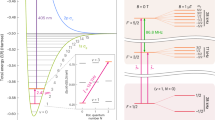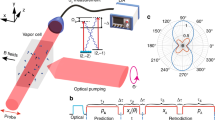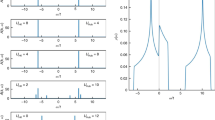Abstract
THE quantum theory of line spectra developed by Bohr has been most successful in explaining the spectrum of hydrogen and helium, and by a further hypothesis the spectra of the alkali metals. By asserting that elliptic orbits are possible, as well as circular orbits, Sommerfeld succeeded in explaining the Stark and Zeeman effects and the fine structure of spectral lines. It is significant that Bohr's equation for the frequency of the spectral series also explains the difference between the series spectra of isotopes of the same element. The experiments of Aronberg and Merton on the structure of 4058 Å. of isotopes of lead showed, however, a remarkable discrepancy between the shift predicted by the theory and that actually observed. Similarly Merton's experiments on the line 6708 of lithium showed that the line consisted of two components 0·151 Å. apart, while the theoretical shift was 0·087 Å. The quantum theory is unable to account for this large separation observed.
This is a preview of subscription content, access via your institution
Access options
Subscribe to this journal
Receive 51 print issues and online access
$199.00 per year
only $3.90 per issue
Buy this article
- Purchase on SpringerLink
- Instant access to full article PDF
Prices may be subject to local taxes which are calculated during checkout
Similar content being viewed by others
Author information
Authors and Affiliations
Rights and permissions
About this article
Cite this article
NARAYAN, A. Spectra of Isotopes. Nature 112, 651 (1923). https://doi.org/10.1038/112651a0
Issue date:
DOI: https://doi.org/10.1038/112651a0



